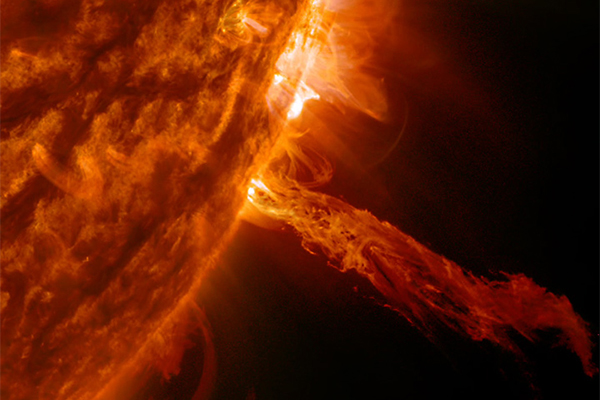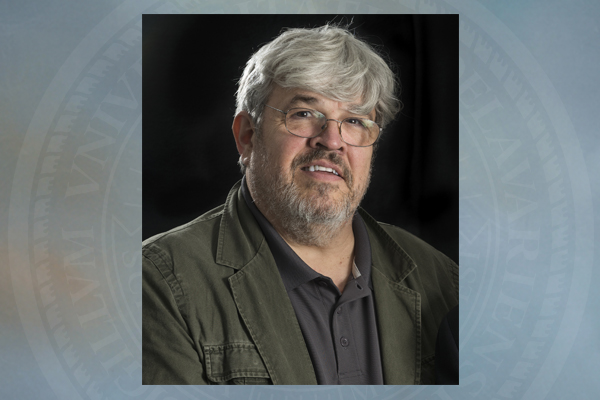Classic space science
UD physicist's findings about space plasma become 'classics'
1:52 p.m., June 20, 2014--The Journal of Plasma Physics (JPP), issued by Cambridge University Press, recently selected the top 12 articles it has published, and a University of Delaware professor has two on the list.
William Matthaeus, professor of physics and astronomy at UD, studies the properties and energy of space plasma, the fourth state of matter and the most abundant form of matter in the universe. It makes up most stars including our sun, as well as the solar wind that flows across the solar system.
Research Stories
Chronic wounds
Prof. Heck's legacy
Unlike ordinary gases, plasmas are good electrical conductors, Matthaeus says. Their electromagnetic force is so strong it can lead to rather unexpected behavior.
“The surface of the sun is 6,600 degrees Kelvin, but if you move a few hundred thousand meters above the surface, the temperature goes over a million degrees Kelvin, which is pretty weird,” he notes.
Recently, Matthaeus and colleague Michael Shay received a $1.2 million research grant from NASA to study energy transport from the sun. Fluctuations in Earth’s protective magnetic field, like chinks in armor, can accelerate high-energy particles toward Earth, knocking out power grids and causing other serious problems.
Of Matthaeus’ two articles highlighted by JPP, he published “Anisotropy in MHD Turbulence Due to a Mean Magnetic Field” with co-authors John V. Shebalin and David Montgomery in 1983, and “The Equations of Reduced Magnetohydrodynamics” with Gary P. Zank in 1992. The former article has had over 500 citations and the latter more than 100 citations, according to the Thomson Reuters Web of Science.
The journal’s editorial board has made the top 12 articles, referred to as “Classic JPP Papers,” available free on its website.
JPP publishes primary research articles in plasma physics, both theoretical and experimental, and its applications. Basic topics include the fundamental physics of plasmas, ionization, kinetic theory, particle orbits, stochastic dynamics, wave propagation, solitons, stability, shock waves, transport, heating and diagnostics. Applications include fusion, laboratory plasmas and communications devices, laser plasmas, technological plasmas, space physics and astrophysics.
Article by Tracey Bryant
Image courtesy of NASA












